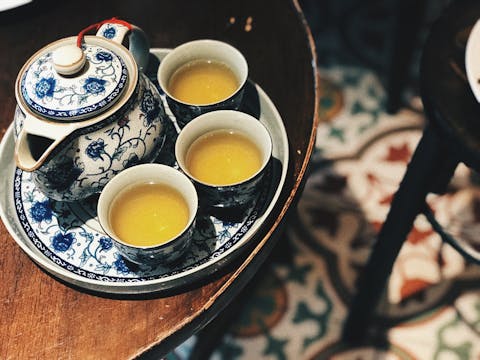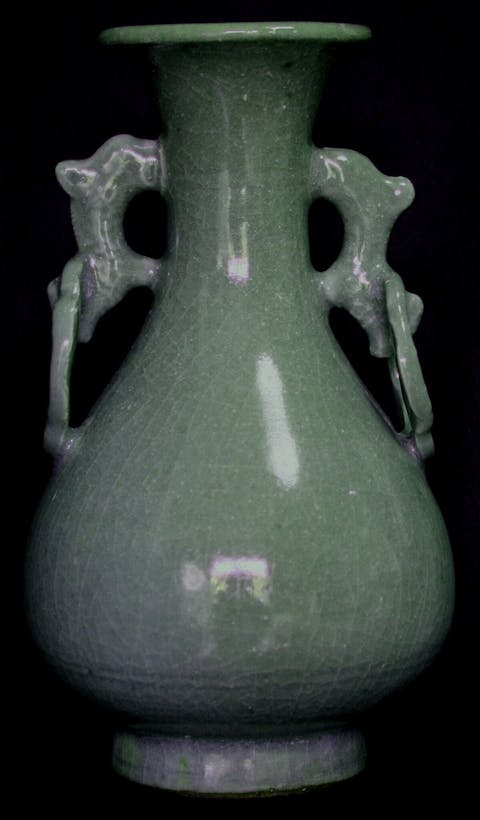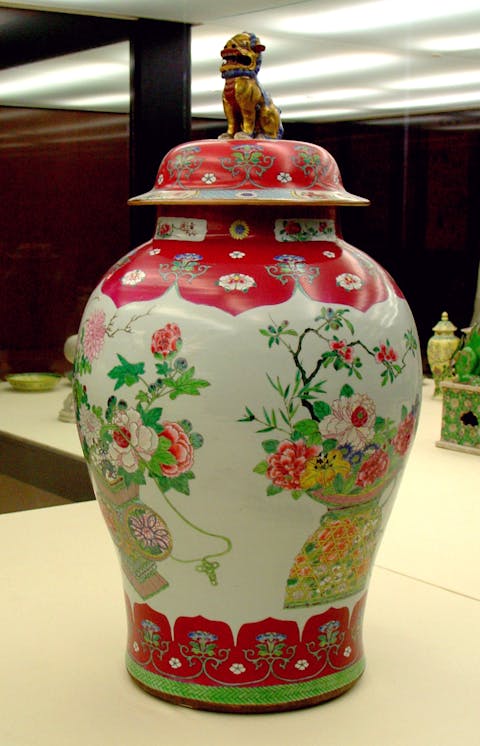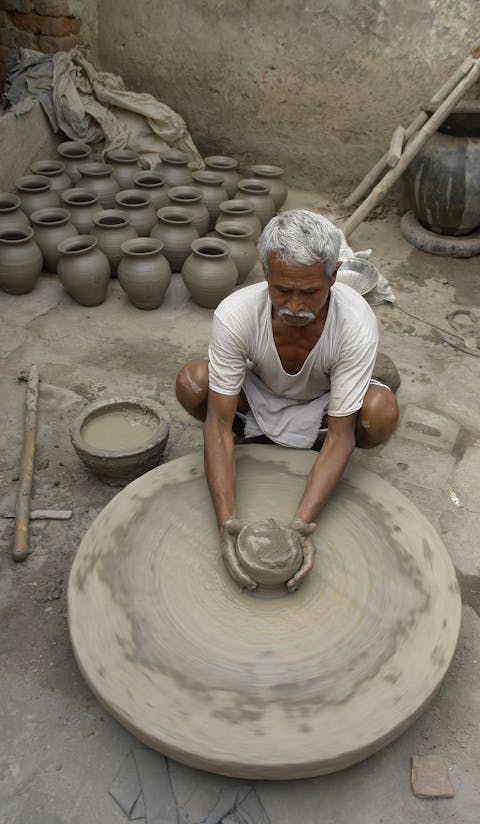Learn About Chinese Ceramics & Porcelain
With pottery being one of the earliest technologies cultivated by mankind, its enduring functionality, influence, and value as an art form have persisted with great strength for thousands of years.
Blue and white vase. (Public Domain)
Perhaps one of the most universally acclaimed and recognized cultures associated with ceramics and porcelain is China. The Chinese tradition of ceramics dates back to the Neolithic period, establishing the region’s ceramic and porcelain heritage as one of the oldest, most longstanding continuous practices in the world. People throughout history and to this day appreciate their work for its durability, variety of functions, and aesthetic beauty. Whether it is concerning pots, vases, figurines, or contemporary works of art, there is surely something within the broad category of Chinese ceramics to interest anyone.
Predynastic pottery
Examples of Chinese pottery date back up to 20,000 years ago, establishing these artifacts as among the oldest known of their kind in the history of the world. By the time of the late Neolithic period, the potter’s wheel was invented, thus changing drastically the nature of ceramic pottery making. From the period between 5000 BCE to 1500 BCE, many major farming communities throughout China were producing highly decorative vessels, employing techniques like pressing, cutting, and bold painting in order to create visual intrigue. Many of these artifacts are found at burial sites, often containing remains. Decorations are often abstract, or representative of the local nature of each community; for example, pottery from the river settlement at Banpo is known for featuring stylistic fish.
Tang Dynasty
Throughout the following eras in Chinese history, great strides were made in developing and innovating the technology of ceramics and porcelain. The Tang Dynasty, which lasted from 618-907, is particularly well known for its three-color ware, which features vibrant, multi-colored glazes. This technique was not only used in the case of traditional wares like vases and pots but also in intricate figurines of camels and travelers. Another type of pottery produced during this time was qingci, otherwise known as celadon. This type of ware is recognizable by its blue-ish green tinted glaze, and timelessly minimalistic shapes, and proved so highly prized that they would continue to be produced well into the next dynasties and were imported and popularized outside of China as well.

Song Dynasty
It was during the Song Dynasty (960-1279) that firing porcelain became widespread, and different wares took the names of the places in which they were produced, each with its own unique qualities and characteristics, taking inspiration from life and nature, and featuring anything from intricate designs to simple and elegant forms.

Song Dynasty Celadon Vase. (Public Domain)
Yuan Dynasty
During the Yuan Dynasty (1279-1368), qinghua porcelain was produced for the very first time. Qinghua porcelain is one of the most easily recognizable wares in the world to this day, characterized by its blue decorations on top a white background. During this time, porcelain makers baked their materials at a high temperature, and the result became known for its purity of body.
"To this day, this type of ware is widely considered to be one of the most valuable forms of pottery in the world."
Ming Dynasty
The Ming Dynasty (1368-1644), however, was the period in which techniques were discovered that further perfected Qinghua porcelain, effectively making it one of the most highly sought-after commodities across the entire world. Jingdezhen, in the Jiangxi Province, was established as a great center of the porcelain-making industry, where porcelain was produced for the Chinese Imperial Court, and shipped off internationally for the rest of the world to admire. To this day, this type of ware is widely considered to be one of the most valuable forms of pottery in the world.

Ming Dynasty Xuande Archaic Porcelain Vase and Six Character Marks. (Public Domain)
Qing Dynasty
The Qing Dynasty (1644-1911) brought its own innovations to the table as well as the creation of five-color wares. This type of porcelain became greatly popular in the West for its variety of pigments allowing for intricate and vibrant designs featuring floral, landscape, and figurative subjects. Inspired by methods used in decorative metalware, artists painted enamel on porcelain in order to achieve impressive patterns, thus creating the technique known as yangcai.

Qing Dynasty Porcelain. (Public Domain)
Chinese Pottery Today
In the decades following the end of the Qing Dynasty, the practice of ceramics and porcelain making in China was greatly compromised as the arts saw a decline due to political distress and instability in the country. However, in more recent years, new and contemporary Chinese artists have emerged that are reviving the centuries-old tradition, this time assigning new meaning and context to the history, skill, and materials of Chinese pottery. Artists like Ai Weiwei, Ah Xian, and Liu Jianhua, are reshaping tradition in a way that reflects the modern world and issues of their own culture as it exists in the contemporary world, while still building upon the methods and heritage of the ancient practice of pottery.

Pottery at work. (Public Domain)
How to Appraise Chinese Ceramics & Porcelain
Do you own Chinese Ceramics and Porcelain? Perhaps something you bought yourself or something you received as a gift, or simply inherited? Value My Stuff is an excellent appraisal platform. With world-leading experts, we provide appraisal certificates within 24 or 48 hours. Start your appraisal here!

